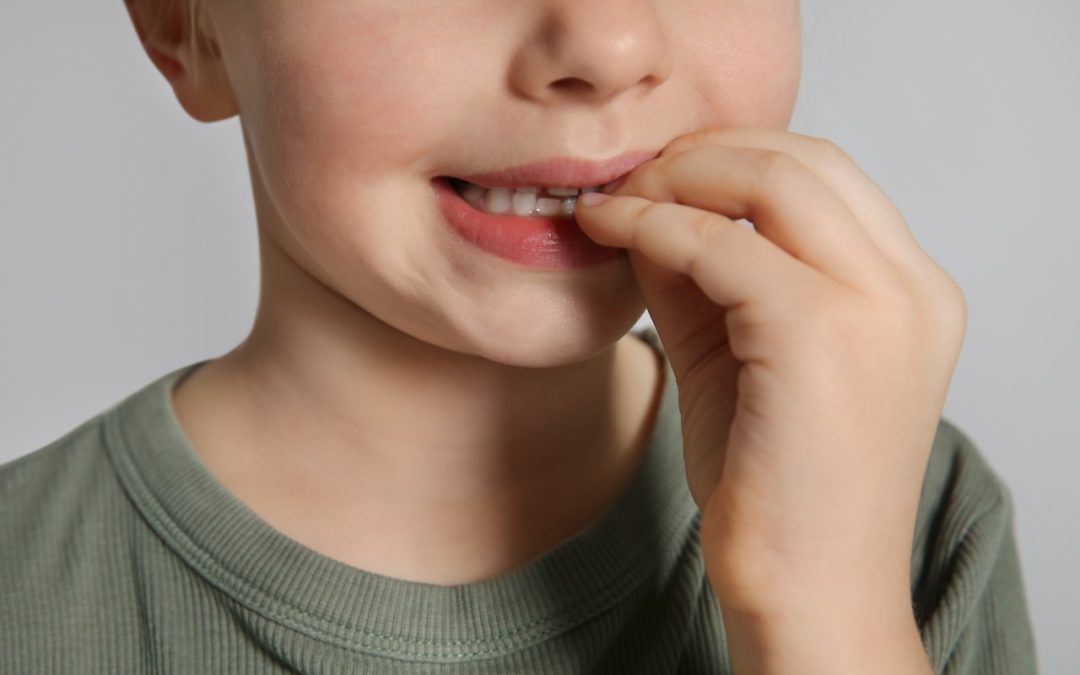While the majority of our population is in fact, not dental experts, society actually as a whole has a few very firm (and correct) understandings and expectations when it comes to the topic of healthy teeth.
We expect our babies to grow the first few adorable little whites within the first year. Most homes generally have a routine to brush teeth in the mornings and again at night before bed. We teach our children to put their lost teeth under their pillow for the tooth fairy, and we associate healthy smiles to the general color category of white. So, what does it mean then, when one of your kids’ pearlies is actually a grey color?
A grey tooth is what we call a necrotic tooth or pulp necrosis. This means that the pulp of the tooth has suffered damage to its blood supply. Without proper blood supply, the tissue begins to die, thereby changing the color of the tooth from white to grey.
Why is My Child’s Tooth Grey?
The potential causes of a grey tooth include the following:
- Dental trauma – this is the most likely cause of a necrotic tooth in children. One of the reasons we strongly advise parents to invest in mouth guards for kids who play sports of any kind is because the use of mouth guards can actually reduce the chances of a dental trauma injury by 73%-83%. Nevertheless, even with the use of mouth guards while engaged in sports activities dental trauma injuries can occur. An accidental elbow to the face, or a head first tumble for your walking toddler. These injuries can occur even with the best of safe guards in place. If your child has suffered a dental injury such as a chipped tooth or a tooth has been knocked loose or all the way out, follow these steps and give us a call immediately. Quick reactions can save the tooth.
- Severe and untreated tooth decay – this cause is less likely if you’re keeping your kids to the recommended biannual cleaning and checkup schedule in addition to encouraging healthy dental hygiene routines at home.
- Gum disease – another cause avoidable with healthy dental hygiene at home and routine checkups and cleanings at your local pediatric dentist.
Can a Grey Tooth Be Saved?
Actually, a grey tooth can be saved if action is taken quickly enough. When the whole of the tooth is mostly intact in spite of the dead or dying pulp tissue within, measures can be taken to save the tooth itself. For this we may perform a pediatric pulpotomy or a root canal.
This means we must first create a hole within the enamel to get inside the tooth to remove the infected or decaying pulp from the inside of the tooth. Next a healing medicine is applied to soothe the nerves and treat any bacteria attempting to grow (which can spread to the root and cause an abscess if untreated). Once that part of the treatment is completed, we reseal the entry and create a cap to cover the tooth. If the tooth in question is a baby tooth (primary tooth) we may opt to cover the entry with a composite filling instead of a cap. A composite filling is a more economic route, and only appropriate in the case of a primary tooth because the tooth’s lifespan is only a few years as opposed to if it were a permanent tooth in question.
Does a Dead Baby Tooth Need to Be Pulled?
In general, we avoid tooth extractions whenever possible. The primary teeth, serve as place holders for their permanent teeth and our bodies generally allow primary teeth to loosen and fall out naturally in accordance for the timing of the eruption of the permanent teeth. Additionally, primary teeth serve to help our children chew and eat foods properly and develop proper speech patterns.
Nevertheless, if your child has a necrotic tooth that is causing severe pain, an infection in the gums or spreading to other teeth, a pediatric pulpotomy may not be appropriate. In these rare circumstances, we may need to simply extract the tooth. For this to be necessary your child would likely be experiencing severe tooth pain, therefore we urge parents to listen to their children when they complain of tooth pain. Don’t wait for it to become severe before scheduling an appointment for a consult.
What if the Teeth Have Grey Spots?
If the tooth or teeth are not wholly grey but instead have grey or black spots or streaks, that doesn’t necessarily mean necrosis is to blame.
These grey colored spots may be indicative of too much iron in their diet. Iron supplements, fortified cereals, or iron-rich water may be to blame. When iron is the culprit, assist your child with tooth brushing for a time and they will disappear.
Grey spots could also be an indication of over exposure to fluoride. Is your child using an appropriate amount of toothpaste when they brush? Are they spitting out the toothpaste or swallowing it instead?
If grey lines or spots are visible near the gum line, they could be indicative of decay, because that area of the tooth can be the hardest for kids to brush properly. Are you taking a turn to help them brush at night before bed?
Call Utah Pediatric Dentists and Schedule a Consult
In any of the aforementioned cases, it is important to seek advice and assistance from your pediatric dentist. We can determine the cause, and appropriate treatment while providing you and your child with reassurance and choices about the best way to move forward with a healthy smile.


Recent Comments